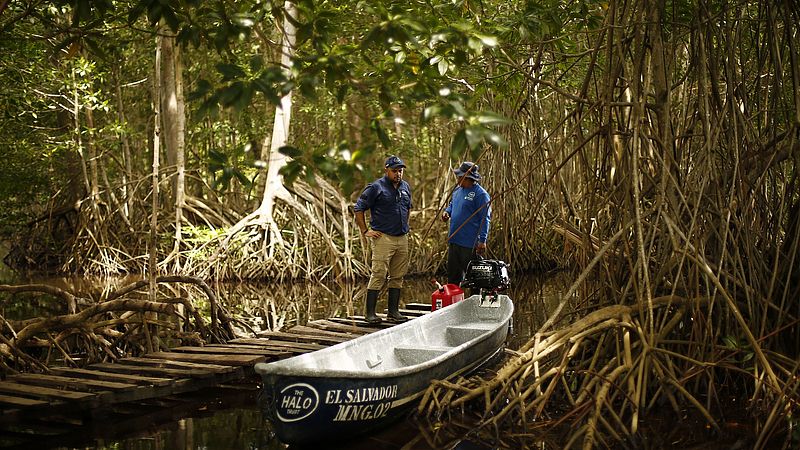At the Dubai Climate Summit, companies will come up with all kinds of solutions to combat climate change. Planting mangrove forests is one of those solutions. Mangrove forests are said to absorb much more carbon dioxide than regular forests. This is how it works.
Mangrove forests are made up of tree species that grow along the coast. “They grow mainly in salt water, which is what makes these trees unique compared to other species,” says Dolfi Debrot, a tropical marine ecologist at Wageningen University.
Where are mangrove forests located?
The forests have a large root system and are found in tropical and subtropical regions, for example in Southeast Asia and the Caribbean.
According to ecologist Dobrot, mangrove forests are increasingly shifting to higher elevations due to global warming. It does not occur in the Netherlands due to low temperatures.
Carbon dioxide absorption
Mangrove forests are extremely important for biodiversity, coastal protection and carbon dioxide sequestration. They capture carbon in two ways.
“Mangrove forests absorb carbon dioxide through photosynthesis, by converting light into the trees themselves. They also fix carbon in the soil with their roots,” explains Utrecht University ecologist Ralf Temminck. Mangrove forests are actually very efficient.
“Not the most influential”
Do mangrove forests absorb five to ten times as much carbon dioxide as natural forests? “Yes, that’s right,” confirms ecologist Timmink. But he says we have to keep that in perspective.
“Natural forests cover a much larger area: 3,700 million hectares compared to 17 million hectares of mangrove forests. Although they can absorb more carbon dioxide than regular forests, they do not have the greatest impact on a large scale.”
Destruction is a big problem
This raises the question: Does planting mangrove forests make sense to combat climate change? “It definitely is,” says ecologist DeBrot. But if we really want to make a difference, according to the researcher, it would be better to focus on preserving existing mangrove forests.
The destruction of mangrove forests continues steadily around the world. Forests often have to make way for palm oil plantations or build shrimp farming ponds. “Globally, we see that most of the carbon dioxide associated with the sea is stored in mangrove forests. If you destroy mangrove forests, all the stored carbon dioxide will be released again. If we can reduce this destruction even further, that is the best thing we can do.” With it, “half the battle has been won,” the researcher concludes.
Asks? Ask them!
Do you have any questions or would like answers? Send us a message here in the chat.

“Coffee buff. Twitter fanatic. Tv practitioner. Social media advocate. Pop culture ninja.”











More Stories
Which can cause an increase in nitrogen.
The Central State Real Estate Agency has no additional space to accommodate Ukrainians.
The oystercatcher, the “unlucky national bird,” is increasingly breeding on rooftops.